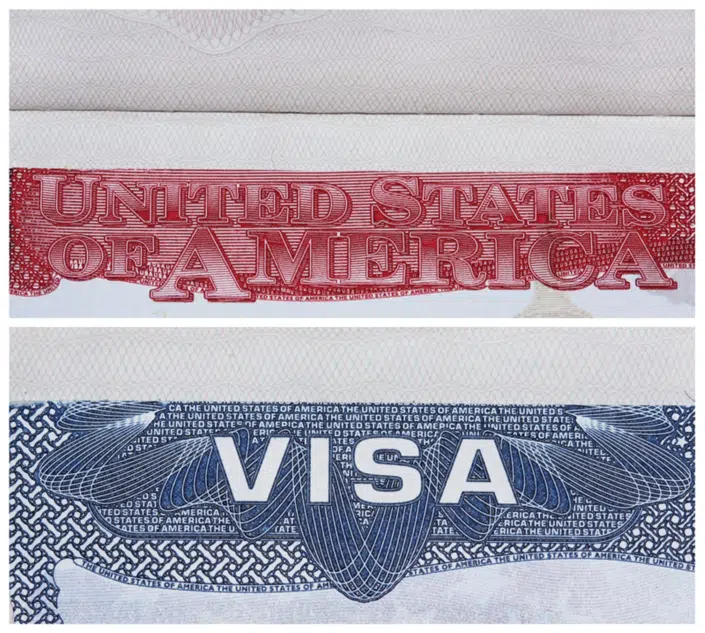Compreender o visto E-2: Um caminho para o investimento e o crescimento económico nos EUA.
Os investidores com visto E-2 são um grupo único de indivíduos ou empresas provenientes de países que partilham tratados comerciais com os Estados Unidos. O seu objetivo é trazer inovação e crescimento económico para os Estados Unidos, supervisionando uma empresa nova ou já existente, onde fizeram um investimento de capital significativo. O estatuto de visto E-2 também está disponível para pessoas empregadas por um investidor ou empresa do tratado que ocupem uma posição executiva ou que possuam competências especializadas cruciais para o funcionamento da empresa. O critério principal é que o investidor ou empregador deve ter a nacionalidade do país do tratado, o que pode ser verificado por um passaporte dessa nação.
Requisitos de investimento para o visto E-2
O investidor com visto E-2 deve assegurar-se de que os seus fundos ou activos estão diretamente associados a si. A documentação que comprova a origem desses fundos é um requisito obrigatório. Vale a pena notar que um investimento implica exposição ao risco. O investimento para o visto E-2 não é passivo, o que significa que o investimento apenas em propriedades ou bens imobiliários, se não exigirem uma gestão ativa e apenas se valorizarem com o tempo, não se qualificam como um investimento para o tratado E-2. Além disso, o investidor tem de demonstrar que dispõe de fontes de rendimento alternativas para se sustentar a si próprio e à sua família enquanto o investimento se desenvolve.
Exemplos de empresas adequadas para investimentos E-2 podem incluir:
- empresas de retalho
- empresas de distribuição
- restaurantes
- franquias
- empresas de fabrico
Estes tipos de empresas requerem uma gestão e supervisão activas, o que está de acordo com o requisito do visto E-2 para um investimento ativo em que o investidor está ativamente envolvido no funcionamento da empresa.
Candidatar-se ao visto de investidor E-2
Quando o pedido de visto E-2 e os documentos comprovativos estiverem devidamente preparados, são apresentados à Secção Consular dos EUA competente. Após a aprovação, o visto é emitido e colocado no passaporte do requerente e, se aplicável, nos passaportes de quaisquer membros da família. O visto de um investidor E-2 pode potencialmente permanecer válido indefinidamente, desde que o investimento seja mantido e o negócio não seja marginal. Nalguns casos, os investimentos com o visto E-2 podem ser adaptados para que um investidor e a sua família possam candidatar-se a um EB-5 visto de investimento.
Os membros da família são elegíveis para o visto E-2
Os titulares do visto E-2 têm o direito de trazer consigo para os Estados Unidos os seus familiares directos. O termo "membros da família" refere-se especificamente ao cônjuge do titular do visto e a quaisquer filhos solteiros com idade inferior a 21 anos. É importante notar que estes membros da família não precisam de ter a mesma cidadania do país do tratado que o titular do visto E-2 principal. No entanto, a sua elegibilidade para permanecer nos EUA ao abrigo do estatuto de tratado é condicional. Quando uma criança completa 21 anos ou se casa, perde a elegibilidade para permanecer nos EUA ao abrigo do estatuto de tratado E-2. Também deve ser mencionado que a permanência de cada membro da família nos EUA depende do seu próprio pedido de visto separado, que deve ser apresentado em conjunto com o pedido do requerente E-2 principal.
Documentação necessária para o visto E-2
A obtenção de um investimento E-2 envolve uma variedade de documentação, como um plano de negócios bem estruturado, prova de fonte legal de fundos, prova de investimento ativo e muito mais. O nosso escritório de advocacia está mais do que pronto para o ajudar a navegar por este processo, oferecendo assistência na organização e preparação da sua documentação.
Aproveitar a experiência de um especialista em imigração para o seu pedido de visto E-2
Garantir um Visto de Investidor E-2 pode ser um esforço complexo que requer uma estratégia bem pensada, uma preparação meticulosa e uma compreensão abrangente das leis e políticas de imigração. Um advogado de imigração experiente pode guiá-lo através deste processo intrincado, fornecendo conselhos sobre considerações importantes, tais como a fonte e o montante do investimento, o tipo de empresa e o papel do investidor na empresa.
Desde a fase inicial de validação da fonte legal de fundos até à demonstração de um investimento substancial numa empresa de boa-fé, o seu advogado pode ajudar a preparar a documentação necessária e a apresentar um caso persuasivo ao Consulado dos EUA. Também pode fornecer aconselhamento estratégico sobre a manutenção do seu estatuto E-2, tal como garantir que a empresa permanece ativa e não está apenas a gerar um rendimento mínimo.
Se o seu objetivo a longo prazo é assegurar a residência permanente nos EUA, um advogado de imigração pode também aconselhar sobre a possibilidade de transição de um Visto E-2 para um Visto de Investidor EB-5. Esta transição requer um planeamento cuidadoso, uma vez que envolve compromissos adicionais, tais como investir o montante mínimo exigido e criar pelo menos 10 novos postos de trabalho a tempo inteiro.
Navegar no processo de candidatura ao Visto E-2 com a ajuda de um advogado de imigração experiente não só aumenta a probabilidade de uma candidatura bem sucedida, mas também proporciona paz de espírito sabendo que os seus objectivos de investimento e imigração estão a ser tratados por um especialista.
Se necessitar de mais informações, não hesite em contactar entrar em contacto com o nosso especialista em direito da imigração certificado pelo conselho.
Países elegíveis para o visto E-2
Notas de rodapé específicas por país
- China (Taiwan) - Em conformidade com a Secção 6 da Lei sobre as Relações com Taiwan (TRA), Lei Pública 96-8, 93 Stat, 14, e Ordem Executiva 12143, 44 F.R. 37191, este acordo, que foi concluído com as autoridades de Taiwan antes de 1 de janeiro de 1979, é administrado numa base não governamental pelo Instituto Americano em Taiwan, uma empresa sem fins lucrativos do Distrito de Colúmbia, e não constitui nem o reconhecimento das autoridades de Taiwan nem a continuação de qualquer relação oficial com Taiwan.
- República Checa e República Eslovaca - O Tratado com a República Federal Checa e Eslovaca entrou em vigor em 19 de dezembro de 1992; entrou em vigor para a República Checa e a República Eslovaca como Estados separados em 1 de janeiro de 1993.
- Dinamarca - O Tratado, que entrou em vigor em 30 de julho de 1961, não se aplica à Gronelândia.
- França - O Tratado, que entrou em vigor em 21 de dezembro de 1960, aplica-se aos departamentos da Martinica, Guadalupe, Guiana Francesa e Reunião.
- Japão - O Tratado, que entrou em vigor em 30 de outubro de 1953, foi tornado aplicável às ilhas Bonin em 26 de junho de 1968 e às ilhas Ryukyu em 15 de maio de 1972.
- Países Baixos - O Tratado, que entrou em vigor em 5 de dezembro de 1957, é aplicável a Aruba e às Antilhas Neerlandesas.
- Noruega - O Tratado, que entrou em vigor em 13 de setembro de 1932, não se aplica a Svalbard (Spitzbergen e algumas ilhas menores).
- Espanha - O Tratado, que entrou em vigor em 14 de abril de 1903, é aplicável a todos os territórios.
- Suriname - O Tratado com os Países Baixos, que entrou em vigor em 5 de dezembro de 1957, passou a ser aplicável ao Suriname em 10 de fevereiro de 1963.
- Reino Unido - A Convenção, que entrou em vigor em 3 de julho de 1815, aplica-se apenas ao território britânico na Europa (as Ilhas Britânicas (exceto a República da Irlanda), as Ilhas Anglo-Normandas e Gibraltar) e aos "habitantes" desse território. Este termo, tal como utilizado na Convenção, significa "aquele que reside efectiva e permanentemente num determinado lugar e que aí tem o seu domicílio". Além disso, para poder beneficiar do estatuto de comerciante ou de investidor ao abrigo deste tratado, o estrangeiro deve ser nacional do Reino Unido. As pessoas que tenham a nacionalidade de membros da Commonwealth que não o Reino Unido não podem beneficiar do estatuto de investidor ou de operador económico ao abrigo deste tratado.
- Iugoslávia - A opinião dos EUA é que a República Socialista Federativa da Jugoslávia (RSFJ) foi dissolvida e que os sucessores que anteriormente constituíam a RSFJ - Bósnia e Herzegovina, Croácia, República da Macedónia, Eslovénia, Montenegro, Sérvia e Kosovo - continuam vinculados ao tratado em vigor com a RSFJ e à data da dissolução.
- O visto E-3 destina-se a cidadãos da Commonwealth da Austrália que pretendam entrar nos Estados Unidos para prestar serviços numa "ocupação especializada". O termo "ocupação especializada" significa uma ocupação que exige a aplicação teórica e prática de um conjunto de conhecimentos altamente especializados e a obtenção de um diploma de bacharelato ou superior na especialidade específica (ou equivalente) como requisito mínimo para a entrada na ocupação nos Estados Unidos. A definição é a mesma que a definição da Lei de Imigração e Nacionalidade de uma ocupação de especialidade H-1B.
- Bolívia - Os cidadãos bolivianos com investimentos qualificados nos Estados Unidos até 10 de junho de 2012 continuam a ter direito à classificação E-2 até 10 de junho de 2022. Os únicos cidadãos da Bolívia (para além dos que se qualificam para o estatuto de derivado com base numa relação familiar com um estrangeiro principal E-2) que se podem qualificar para vistos E-2 neste momento são os requerentes que vêm para os Estados Unidos para se envolverem em actividades E-2 em prol de investimentos cobertos estabelecidos ou adquiridos antes de 10 de junho de 2012.
- Os cidadãos equatorianos com investimentos qualificados nos Estados Unidos até 18 de maio de 2018 continuam a ter direito à classificação E-2 até 18 de maio de 2028. Os únicos cidadãos do Equador (para além dos que se qualificam para o estatuto de derivado com base numa relação familiar com um estrangeiro principal E-2) que podem qualificar-se para vistos E-2 neste momento são os requerentes que vêm para os Estados Unidos para se envolverem em actividades E-2 em prol de investimentos cobertos estabelecidos ou adquiridos antes de 18 de maio de 2018.
- Israel: Nos termos de um tratado de amizade, comércio e navegação entre os Estados Unidos e Israel, que entrou em vigor em 3 de abril de 1954, os nacionais de Israel têm direito ao estatuto E-1 para efeitos de comerciante ao abrigo do tratado. Os nacionais de Israel não têm direito à classificação E-2 para efeitos de investidor ao abrigo desse tratado. A Lei Pública 112-130 (8 de junho de 2012) concede aos nacionais de Israel o estatuto E-2 para efeitos de investidor ao abrigo do tratado se o Governo de Israel conceder um estatuto de não imigrante semelhante aos nacionais dos Estados Unidos. O Departamento confirmou que Israel oferece tratamento recíproco de investidor do tratado aos nacionais dos EUA e que o visto E-2 pode ser emitido para os nacionais de Israel a partir de 1 de maio de 2019.
- Nova Zelândia: A Lei Pública 115-226, promulgada em 1 de agosto de 2018, concedeu aos nacionais da Nova Zelândia os estatutos E-1 e E-2 para efeitos de comerciante/ investidor do tratado, se o Governo da Nova Zelândia conceder um estatuto de não imigrante semelhante aos nacionais dos Estados Unidos. O Departamento confirmou que a Nova Zelândia oferece um estatuto de não imigrante semelhante aos nacionais dos EUA e que os vistos E podem ser emitidos aos nacionais da Nova Zelândia a partir de 10 de junho de 2019.
Pergunte-nos
A sua pergunta
Atingiu o limite do número de mensagens que pode enviar através deste formulário.











